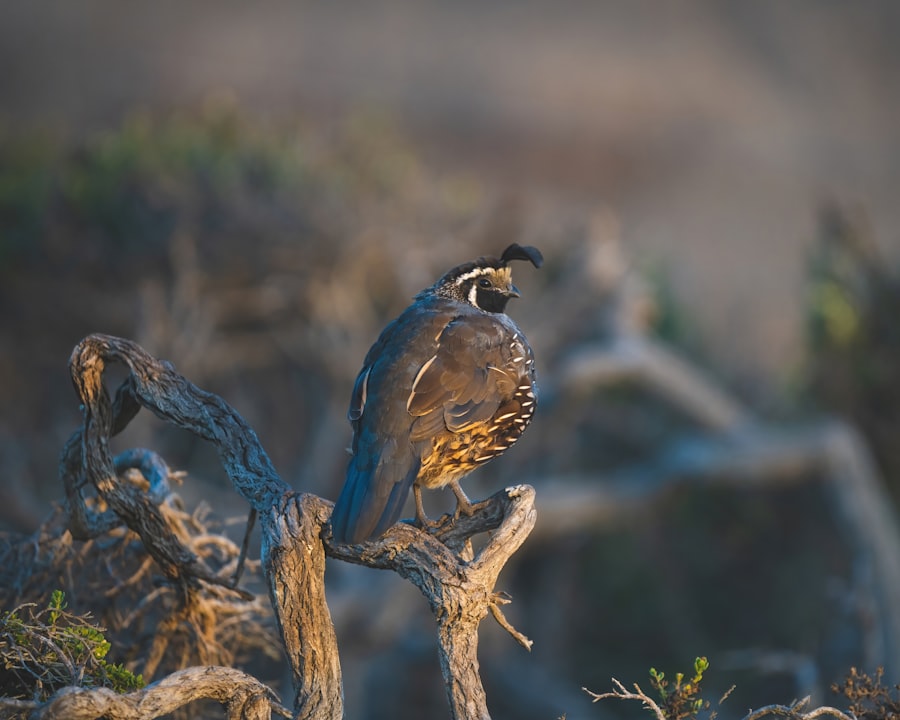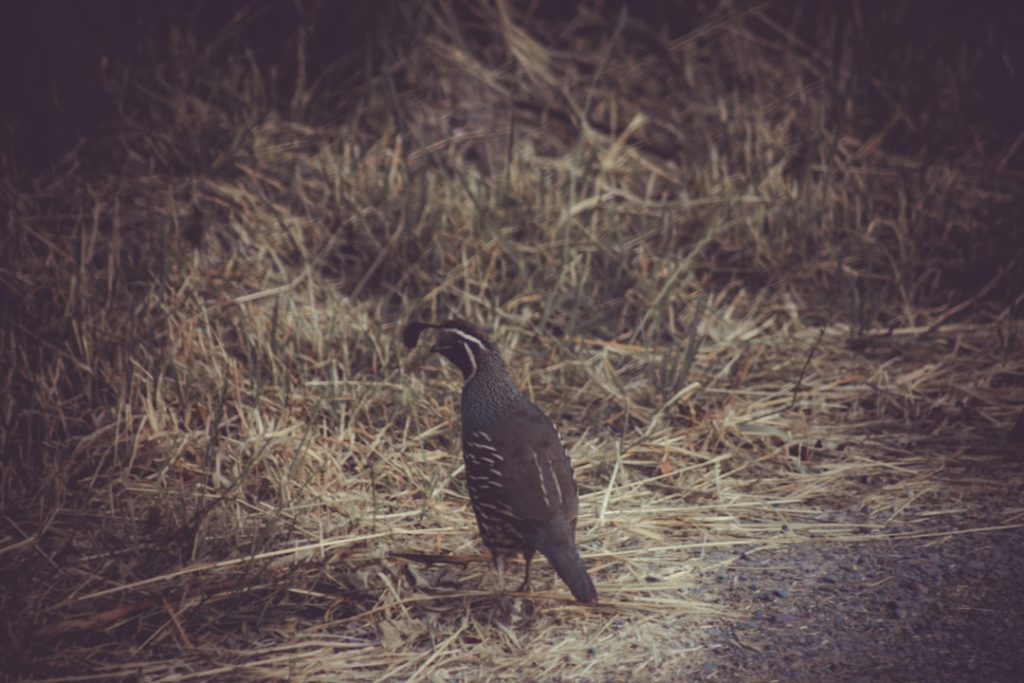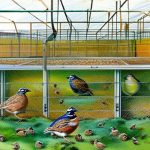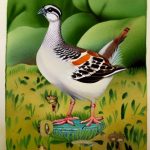Breeding Silver King Quail can be a rewarding and enjoyable experience for bird enthusiasts. These small, colorful birds are known for their gentle nature and beautiful plumage, making them a popular choice for breeders. Understanding the breeding process is essential for success, as it requires careful planning and attention to detail. Silver King Quail reach sexual maturity at around 6-8 weeks of age, and breeding can occur throughout the year. However, it is important to note that breeding should be avoided during extreme weather conditions, as this can negatively impact the health and success of the breeding pair.
When it comes to breeding, it is important to consider the genetics of the birds to ensure healthy offspring. Inbreeding should be avoided, as it can lead to genetic defects and health issues in the chicks. Additionally, it is important to have a clear understanding of the behavior and mating rituals of Silver King Quail. Males are known for their elaborate courtship displays, which involve puffing up their feathers and making soft cooing sounds to attract a mate. Understanding these behaviors can help breeders identify when their quail are ready to breed and can also help in selecting the right breeding pair.
Table of Contents
- 1 Selecting the Right Breeding Pair
- 2 Creating the Ideal Breeding Environment
- 3 Managing the Breeding Process
- 4 Caring for the Eggs and Chicks
- 5 Health and Nutrition for Breeding Quail
- 6 Troubleshooting Common Breeding Issues
- 7 FAQs
- 7.1 What is silver king quail breeding?
- 7.2 What are the basic requirements for breeding silver king quails?
- 7.3 How do you identify male and female silver king quails?
- 7.4 What is the breeding season for silver king quails?
- 7.5 How long does it take for silver king quail eggs to hatch?
- 7.6 What should be considered when breeding silver king quails for exhibition?
Key Takeaways
- Silver King quails are relatively easy to breed and can produce a large number of offspring.
- When selecting a breeding pair, look for healthy, active birds with no signs of illness or deformities.
- The ideal breeding environment for Silver King quails should include a spacious cage with nesting boxes, proper lighting, and a balanced diet.
- Managing the breeding process involves monitoring the pair for mating behavior, providing a comfortable nesting area, and ensuring a stress-free environment.
- When caring for the eggs and chicks, it’s important to keep the nesting area clean, provide warmth, and offer a high-protein diet for the growing chicks.
- Health and nutrition are crucial for breeding quails, so make sure to provide a balanced diet, clean water, and regular health check-ups.
- Common breeding issues such as infertility, egg binding, and chick mortality can be addressed by adjusting the breeding environment, providing proper nutrition, and seeking veterinary care when necessary.
Selecting the Right Breeding Pair
Selecting the right breeding pair is crucial for successful Silver King Quail breeding. When choosing a breeding pair, it is important to consider the health, age, and genetics of the birds. Healthy, mature birds are more likely to produce strong, viable offspring, so it is important to select birds that are in good condition and free from any health issues. Additionally, it is important to avoid breeding birds that are closely related, as this can lead to genetic defects and health problems in the chicks.
When selecting a breeding pair, it is also important to consider the temperament and behavior of the birds. Choosing birds that have compatible personalities can help reduce stress and aggression during the breeding process, leading to a more successful outcome. It is also important to consider the color and plumage of the birds when selecting a breeding pair, as this can impact the appearance of the offspring. By carefully considering these factors, breeders can ensure that they are selecting the best possible breeding pair for their Silver King Quail.
Creating the Ideal Breeding Environment
Creating the ideal breeding environment is essential for successful Silver King Quail breeding. The breeding environment should mimic the natural habitat of the quail, providing them with the space, privacy, and resources they need to breed successfully. A spacious aviary or breeding enclosure is essential for providing the quail with enough room to move around and engage in natural behaviors. Additionally, the enclosure should be equipped with plenty of hiding spots and nesting boxes to provide the quail with privacy during the breeding process.
The breeding environment should also be equipped with the right resources to support the breeding pair. This includes providing a balanced diet of high-quality quail feed, fresh water, and access to calcium supplements to support egg production. It is also important to provide the quail with a variety of materials for building nests, such as straw, hay, or shredded paper. By creating an environment that meets the physical and behavioral needs of the quail, breeders can help ensure a successful breeding outcome.
Managing the Breeding Process
Managing the breeding process requires careful observation and attention to detail. Once a breeding pair has been selected and placed in an appropriate environment, it is important to monitor their behavior and interactions closely. This can help breeders identify when the quail are ready to breed and can also help them intervene if any issues arise during the process. It is important to provide the breeding pair with privacy and minimal disturbance during this time, as this can help reduce stress and increase the likelihood of successful breeding.
During the breeding process, it is important to monitor the female quail for signs of egg laying and incubation. Once eggs have been laid, it is important to carefully monitor the nest and ensure that the eggs are being properly incubated. If necessary, breeders may need to intervene to provide additional warmth or support for the eggs. Additionally, it is important to monitor the behavior of both parents during this time, as some males may become aggressive or territorial during the breeding process. By carefully managing the breeding process, breeders can help ensure a successful outcome for their Silver King Quail.
Caring for the Eggs and Chicks
Caring for the eggs and chicks is a critical part of successful Silver King Quail breeding. Once eggs have been laid, it is important to provide the nesting female with a quiet and secure environment to incubate her eggs. It is important to monitor the nest regularly to ensure that the eggs are being properly cared for and that any issues are addressed promptly. Once the eggs hatch, it is important to provide the chicks with a warm, safe environment and access to food and water.
When caring for quail chicks, it is important to provide them with a balanced diet of high-quality chick starter feed and access to fresh water. It is also important to provide them with a warm brooder or heat lamp to maintain their body temperature during the early stages of development. Additionally, it is important to monitor the health and development of the chicks closely, as they are vulnerable to health issues and require careful attention during this time. By providing attentive care and support for the eggs and chicks, breeders can help ensure a successful outcome for their Silver King Quail breeding efforts.
Health and Nutrition for Breeding Quail

Maintaining the health and nutrition of breeding quail is essential for successful breeding outcomes. Providing a balanced diet of high-quality quail feed is essential for supporting egg production and overall health in breeding quail. Additionally, it is important to provide access to fresh water at all times, as dehydration can negatively impact egg production and chick development. It is also important to provide access to calcium supplements for female quail, as this can support strong eggshell formation and overall reproductive health.
Regular health checks are also important for monitoring the well-being of breeding quail. This includes monitoring for signs of illness or injury, as well as providing access to veterinary care when needed. Additionally, it is important to maintain a clean and hygienic environment for breeding quail, as this can help reduce the risk of disease and infection. By prioritizing the health and nutrition of breeding quail, breeders can help ensure a successful and sustainable breeding program.
Troubleshooting Common Breeding Issues
Despite careful planning and management, breeders may encounter common issues during the breeding process. This can include issues such as infertility, egg binding, or poor hatch rates. When troubleshooting these issues, it is important to first assess the overall health and well-being of the breeding pair. This includes monitoring their diet, environment, and behavior for any potential issues that may be impacting their ability to breed successfully.
If infertility or poor hatch rates are a concern, it may be necessary to reassess the genetics of the breeding pair or seek out alternative mates with stronger reproductive potential. Additionally, providing access to a balanced diet, proper nesting materials, and a stress-free environment can help support successful breeding outcomes. If egg binding or other reproductive issues arise, it is important to seek veterinary care promptly to address any potential health concerns.
By carefully monitoring the breeding process and addressing any issues that arise promptly, breeders can help ensure a successful outcome for their Silver King Quail breeding efforts. It is also important to seek out support from experienced breeders or avian professionals when troubleshooting common breeding issues, as they can provide valuable insights and guidance based on their own experiences with breeding quail.
If you’re interested in learning more about creating the perfect environment for your silver king quail breeding, you might also want to check out this informative article on building an A-frame chicken coop. Creating a suitable and comfortable living space for your quails is essential for successful breeding, and this article provides valuable insights into designing a functional and efficient coop.
FAQs
What is silver king quail breeding?
Silver king quail breeding refers to the process of mating and raising silver king quails in order to produce offspring. This can be done for various purposes, such as for pets, for meat production, or for exhibition.
What are the basic requirements for breeding silver king quails?
The basic requirements for breeding silver king quails include a suitable breeding enclosure, proper nutrition, a balanced ratio of males to females, and a conducive environment for mating and nesting.
How do you identify male and female silver king quails?
Male silver king quails can be identified by their distinctive black and white facial markings, while females have a more subdued and uniform coloration. Additionally, males typically have a more melodious call compared to the females.
What is the breeding season for silver king quails?
Silver king quails are known to breed throughout the year, but they may exhibit increased breeding activity during the warmer months. It is important to provide a consistent and stable environment to encourage breeding behavior.
How long does it take for silver king quail eggs to hatch?
Silver king quail eggs typically take around 17 to 18 days to hatch. It is important to provide a warm and stable environment for the eggs during this incubation period.
What should be considered when breeding silver king quails for exhibition?
When breeding silver king quails for exhibition, it is important to select breeding stock with desirable traits such as coloration, size, and overall conformation. Additionally, proper care and nutrition should be provided to ensure the health and vitality of the birds.
Meet Walter, the feathered-friend fanatic of Florida! Nestled in the sunshine state, Walter struts through life with his feathered companions, clucking his way to happiness. With a coop that’s fancier than a five-star hotel, he’s the Don Juan of the chicken world. When he’s not teaching his hens to do the cha-cha, you’ll find him in a heated debate with his prized rooster, Sir Clucks-a-Lot. Walter’s poultry passion is no yolk; he’s the sunny-side-up guy you never knew you needed in your flock of friends!







